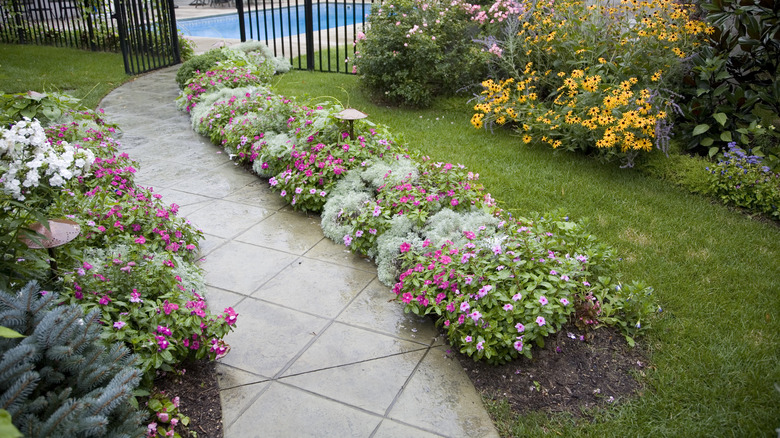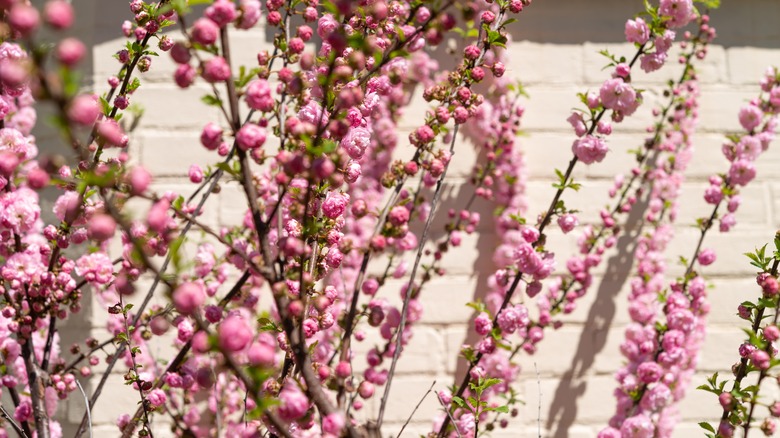Give Your Spring Border Garden A Pop Of Color With This Flowering Shrub
If you're looking for colorful flowers for your spring border garden and want to add something unique with a shade that makes you swoon, look no further than the dwarf flowering almond. This shrub — also known as Prunus glandulosa — is native to regions of eastern China and Japan and is a member of the rose family. It has similar lush, soft double pink blossoms. The shrub grows 3 feet tall and 4 feet wide, making it a unique (and beautiful!) addition to your border garden.
When spring rolls into summer, the dwarf flowering almond will grow bright green leaves and look like a bush. The leaves may slightly change in the fall before dying off in the winter, leaving the tall wand-like branches in their wake. Although the colors of this flower have a shorter life span (you'll only see blooms for a few weeks during late March and April), this plant does not need to be replanted each year. This shrub lasts between 10 to 20 years if taken care of well.
Caring for dwarf flowering almond
To properly care for this shrub, it needs a significant amount of sunlight to survive, at least six hours or more of full sun each day. Like many newly planted shrubs, the dwarf flowering almond needs good drainage in the soil to prevent root rot. A newly planted shrub will also need a lot of attention upon first planting it. In the first week or second, you should water it daily, then for the next 3 to 12 weeks, water it every 2 to 3 days. After 12 weeks, the shrub can thrive with the recommended ½-inch water every 7 to 10 days. They also don't do well with neighboring plants, so give the shrub enough space to grow and those gorgeous flowers the attention they deserve.
Keep in mind that the dwarf flowering almond is susceptible to pests and many diseases, one of the most common being borers, insects that feed off the roots and branches of a shrub. Pruning is vital for avoiding disease and keeping the shrub happy; prune any dead, diseased, or rubbing branches to keep this plant thriving. The best time to prune is when the blooms are spent, meaning the flowers have officially opened up. (Avoid doing this in the winter, or you will stunt proper growth.) Experts recommend following the ⅓ pruning rule and keeping the older, sturdier branches to create a picturesque plant.

